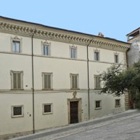

Palazzo Bontadosi (16th century)

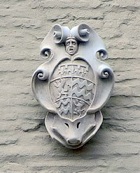
The palace now houses the Hotel Palazzo Bontadosi.
Palazzo de Cuppis (rebuilt 1480-9)
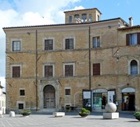
Palazzo Santi Gentili (late 16th century)
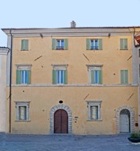
Palazzi Senili (16th century)
The Senili family owned two palaces in Montefalco:
-
✴Ottaviano and Gisberto Senili built the palace in Corso Goffredo Mameli in 1504-7 and extended it in 1513-5. The facade was ruined in the 19th century, but one of the original windows survives. The arms of Cardinal Ranuccio Farnese (died 1565) are on the facade as a record of his stays in the palace as a guest of the family. Frescoes in the interior record the privileges that King Matthias Corvinus of Hungary conferred on Piergentile Senili when the latter acted as an ambassador for Pope Sixtus IV to the Hungarian court in 1478.
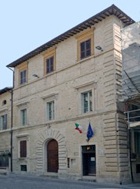
-
✴Lattanzio Senili built the palace in Piazza del Comune in the early 16th century. He was later accused of helping troops of the Bande Nere led by Orazio Baglioni to sack Montefalco in 1527, and was lynched in Piazza del Comune. The inscriptions across the windows of the piano nobile proclaim his virtue and imply the injustice that he suffered.

Palazzi Tempestivi (16th century)
The Tempestivi family were among the most important in Montefalco from the mid-16th century. The family owned two palaces in Montefalco:
-
✴Bernardino Tempestivi , who owned the palace in in Corso Goffredo Mameli, played host to the future St Charles Borromeo in the first of these palaces in 1579: the Confraternita di San Carlo Borromeo was founded here soon after the canonisation of St Charles Borromeo in 1610. Today, the palace belongs to the Accademia di Montefalco.
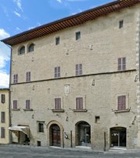
-
✴Cherubino Tempestivi, who was the secretary to Pope Clement VIII, built the palace in Via Tempestivi. The design is sometimes attributed to Giacomo Barozzi da Vignola, and the frescoes inside are from the Zuccari workshop.
